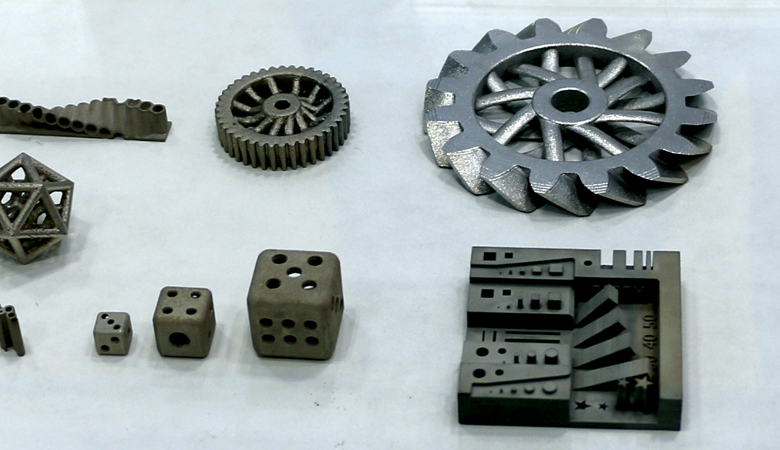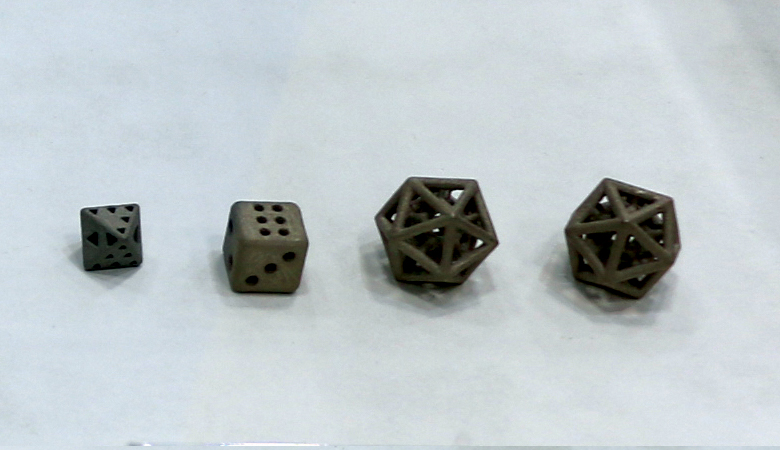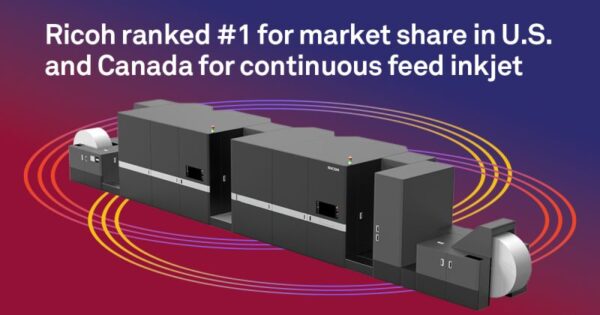Canon and Ricoh are Developing Technology for Industrial 3D Printers that Manufacture Parts
Above and below: Examples of materials created on Ricoh and Canon 3D printers.
Demand for office MFPs and printers has hit its peak, and copier manufacturers are developing new businesses that are expected to grow in the future. One new business segment is 3D printers for manufacturing parts from ceramics and metals for industrial use. Canon and Ricoh have recently introduced products in this segment. However, the target market is not offices, and the challenge for both companies is finding new market opportunities.
Ricoh’s 3D technology is based on its GELJET technology, which combines similar processes used in inkjet printer output and electrophotographic toner manufacturing technologies.
Ricoh exhibited at “International Powder Industry Exhibition Tokyo 2018” held at Tokyo Big Sight (POWTEX TOKYO 2018) and introduced its technology, even though it was still under research and development to manufacture metal parts with a 3D printer. At the Exhibition, Ricoh showcased metal parts it manufactured in complex shapes.
The 3D printer technology from Ricoh is a binding system that aligns thin, uniform nano-level resin films on the surface of powdered metal particles, dissolves resin films, and binds powder to form by jetting special ink in the gap. This is a four-stage process.
In the first stage, powdered 3D printer material (metal particles) is produced by coating a metallic powder surface with nano-level resin film in the same way toner is made. In the second stage, the coated metal particles are laid thinly on a flat surface and special ink is sprayed from the top using inkjet technology into particle gaps with pinpoint accuracy. Then, the resin films dissolve from the ink and the particles are bonded and become one. In the third stage, the same operation is repeated on the particles and partially bonded on the flat surface to overlay the layers. Particles bind stereoscopically, forming the target model.
In the fourth stage, the completed model is sintered, which is the process of compacting and forming a solid mass of material by heat or pressure without melting it to the point of liquefaction. Then, the resin is blown off and the metal particles are bonded by heat. The finished product is a metal part with a smooth hard surface. This provides sufficient strength for mechanical parts such as gears. The current experimental equipment can make parts up to about 10 cm in height.
Ricoh is looking for this powder material coating technology to be used in devices outside 3D printers, and the company is seeking partners in a wide range of fields.
Canon has developed technology to produce ceramic parts in complicated shapes with high precision using its original ceramics material. This newly developed alumina ceramics material and part fabrication technology is suitable for the selective laser melting method, which is one of the molding methods of 3D printers.
This technology enables 3D printers to stably create ceramic parts in complicated shapes, including those with hollow and porous structures, which are difficult to mold or cut with conventional molds. For example, when a 19-mm diameter honeycomb-shaped part with hexagonal holes is needed, high-precision parts with an external dimensional change of less than 0.8% before and after the firing step can be produced.
Access Related Content
Visit the www.thecannatareport.com. To become a subscriber, visit www.thecannatareport.com/register or contact cjcannata@cannatareport.com directly. Bulk subscription rates are also available.





